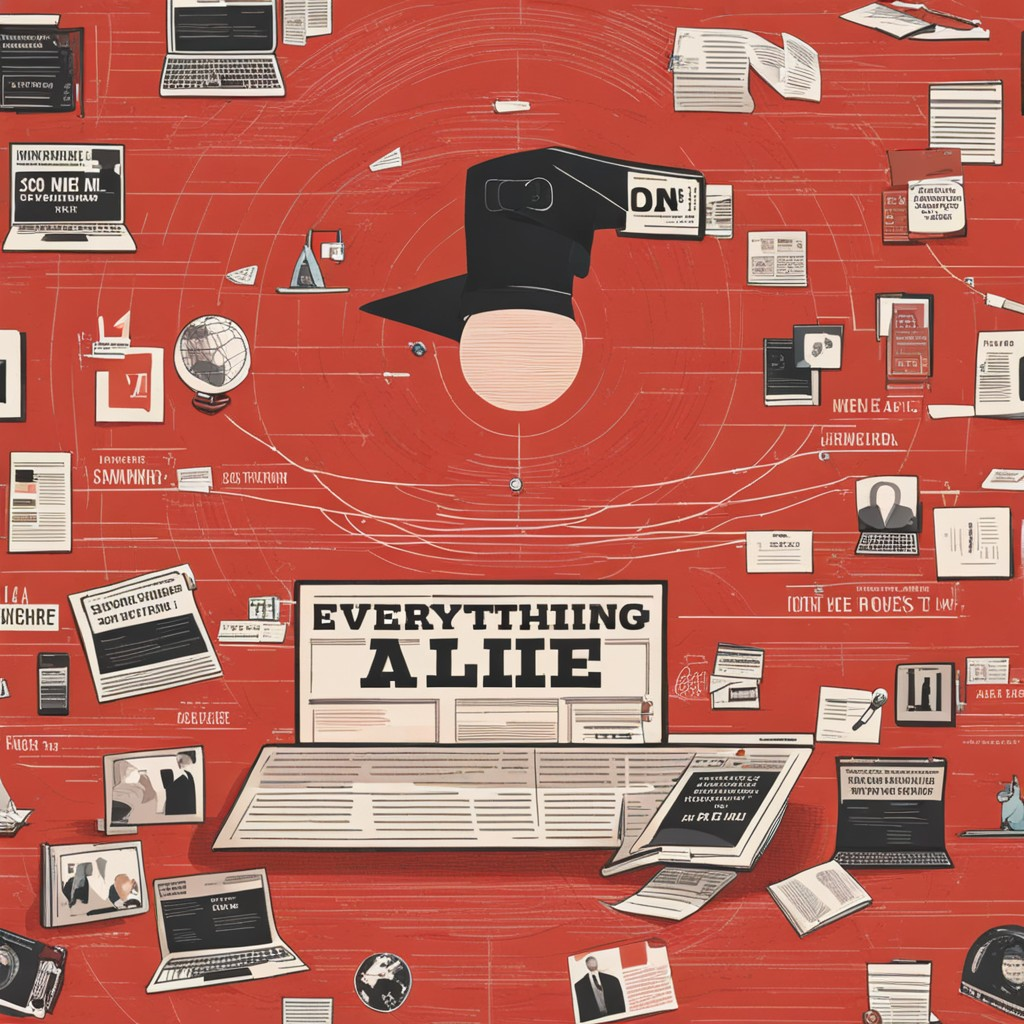Everything is a Lie: Navigating the Era of Misinformation
In the age of information, we are constantly bombarded with stories, facts, and data, each claiming to be the truth. But as we dive deeper into this vast sea of information, we begin to question the authenticity of what we encounter. This phenomenon has led to a realization that everything might be a lie.
The Speed of Deception
There's a famous quote, often attributed to Winston Churchill, that claims a lie can travel halfway around the world before the truth can put its pants on. The digital age has amplified this, as a study from MIT reveals that fake news spreads six times faster than true news. The power of deception is staggering, and it's becoming increasingly difficult to discern fact from fiction.
The Birth of "Fake News"
The term "fake news" gained prominence in 2016, originating from a small town in Macedonia where teenagers exploited the digital landscape for financial gain. They created websites that posed as news sources, publishing fabricated and sensationalized stories to attract clicks and maximize ad revenue. This troubling trend revealed the power of misinformation in the online world.
Media and Its Quest for Attention
Traditional media conglomerates have also realized the potency of sensationalism in attracting viewers and readers. As the business model of media shifted from delivering news to selling audiences to advertisers, the need for attention became paramount. The result: polarizing stories that foster fear and outrage, deepening societal divisions.
Half-Truths: A Subtle Manipulation
While fake news and blatant lies garner attention, a more subtle form of manipulation exists in the media: half-truths. These are statements that contain partial truths but lack context and nuance. They allow media outlets to construct narratives that fit their agenda while avoiding libel. Half-truths are the tool that distorts reality to serve a specific narrative.
The Illusion of Objectivity
We like to believe that we seek unbiased sources of information, but true objectivity is an elusive concept. Every piece of information we encounter has passed through multiple biased filters, including the journalists' own perspectives, experiences, and subconscious biases. The result is an information landscape riddled with subjective interpretations.
The Role of Social Media
Social media platforms contribute to the spread of misinformation by promoting polarizing, emotionally charged content. Platforms exploit human psychology to keep users engaged, and controversial content generates more engagement. However, the consequence is a fractured society, divided by manipulated emotions.
The Challenge of Empathy
In a world where news is reduced to 280 characters and headlines, genuine empathy is hard to come by. Individuals are locked into their beliefs, and the oversimplified narratives they consume prevent them from understanding alternative perspectives. Media and social platforms capitalize on this division.
Questioning the Nature of Reality
The more we delve into the complexities of truth and deception, the murkier the waters become. Even our fundamental beliefs about the nature of reality and existence come into question. Concepts like simulated realities, alternate dimensions, and the limitations of human perception challenge the very foundation of our understanding.
Conclusion
In an era where everything seems to be a lie, the quest for truth becomes more challenging than ever. The interplay between information, bias, and manipulation in our daily lives leaves us questioning the nature of reality itself. To navigate this maze, we must remain critical thinkers, ready to question, research, and empathize with differing perspectives. In a world where everything might be a lie, the search for truth becomes a journey of enlightenment.



Comments
Post a Comment